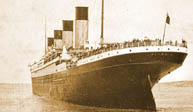Newsbites
Up, Up and Away

Courtesy Moller International
Stuck in endless, winding lanes of traffic, we often daydream about just flying away and leaving everything behind. It's a nice little fantasy, but Paul Moller, MEng'61, PhD'64, wants to go one better: why not take the car with you?
Moller, founder and president of California-based Moller International Inc., has spent years working on a commercially viable design for the Skycar, "the first and only feasible, personally affordable, personal vertical takeoff and landing (VTOL) vehicle the world has ever seen," according to the company website. "Three-dimensional mobility in place of two-dimensional immobility." Yes, a flying car. And it works.
For Moller, McGill was a critical turning point in his career and he calls his aeronautics professor, the late Barry Newman, "probably the most significant player in my life." Professor Newman managed to squeeze the then 23-year-old Moller into McGill's graduate engineering program, despite the young mechanic's lack of prerequisite undergraduate experience. A short three years later, the Skycar's visionary inventor left McGill with a PhD in aerodynamics and a scaled-down prototype of a VTOL aircraft that he built in his apartment.
"I learned a lot then about what was important for the final aircraft," Moller has said. "If you want something to go fast you can't do it in a round shape85it's got to have an aerodynamic type of configuration." From that early model has come the newest incarnation of the Skycar, the candy-apple red, eight-engine, four-passenger M400, a Jetsons-age VTOL-capable wonder.
Its makers claim that road-bound vehicles will inevitably go the way of the dinosaurs, left in Skycar's 350-miles-per-hour dust. "No matter how you look at it, the automobile is only an interim step on our evolutionary path to independence from gravity."If they're right and if Moller's test flights this spring are successful, one day soon weary commuters may be launching themselves out of highway patrol turf - and onto the radar screens of air-traffic controllers.
Look for the Skycar on display at Wired magazine's Next Fest in San Francisco in May, and for Paul Moller, who will speak at the IdeaCity04 Conference in Toronto in June.
Tough Titanic Survivors

James Hanley teaches his students how to sleuth their way through statistics. A professor of epidemiology and biostatistics, Hanley is always on the lookout for classroom exercises "that are fun and memorable for the students" as a means of honing their ability to analyze data. Enter a certain "unsinkable" luxury liner that became a tragic legend when it sank in spectacular fashion in 1912, following a collision with an iceberg.
Of the 2,000 passengers aboard the Titanic for its maiden voyage, 1,500 lost their lives. Hanley was curious about the survivors. His initial motive was to challenge his students. If he supplied them with statistical information on the Titanic's survivors, would they be able to figure out who these numbers referred to? Once his charges solved the puzzle, Hanley and a group of students pondered another question. What were the effects of such an ordeal?
In a paper titled "How long did their hearts go on? A Titanic study," published in the British Medical Journal, Hanley and his collaborators compared Titanic survivors to contemporaries from similar backgrounds in the U.S. and Sweden. "Several studies have examined post-traumatic stress in people who survive disasters but few have looked at longevity," the paper's authors noted.
"There were two ways of looking at it," says Hanley. "One is, if you were tough enough to survive that, you were tough enough to survive anything and you probably lived longer than most. Another theory is, these survivors would have been so traumatized, they never would have fully recovered," making them more vulnerable to early deaths than the population at large.
In the end, Hanley detected no major differences between Titanic's survivors and the comparison groups - on average, the Titanic group lived 1.7 years longer than the U.S. general population and 0.5 years longer than the Swedes.
Nor were there noteworthy distinctions among different types of passengers. Even though the survivors in steerage - mostly immigrants from Europe on their way to new homes in America - almost surely didn't enjoy the same sorts of privileges as richer shipmates traveling first- or second-class, they lived, on average, almost as long. "Immigrants tend to be hardy," speculates Hanley. "They have to have the get-up-and-go to make such a drastic change to their lives."
Hanley culled his data from the Encyclopedia Titanica, a website with boatloads of information about the ship and the people who sailed on her. He plans to use the data for future classroom exercises, examining stress levels among Titanic survivors, for instance.
"There are exquisite records related to the Titanic," says Hanley, grateful for all the Titanic buffs "who spend practically their whole lives putting these records together."


